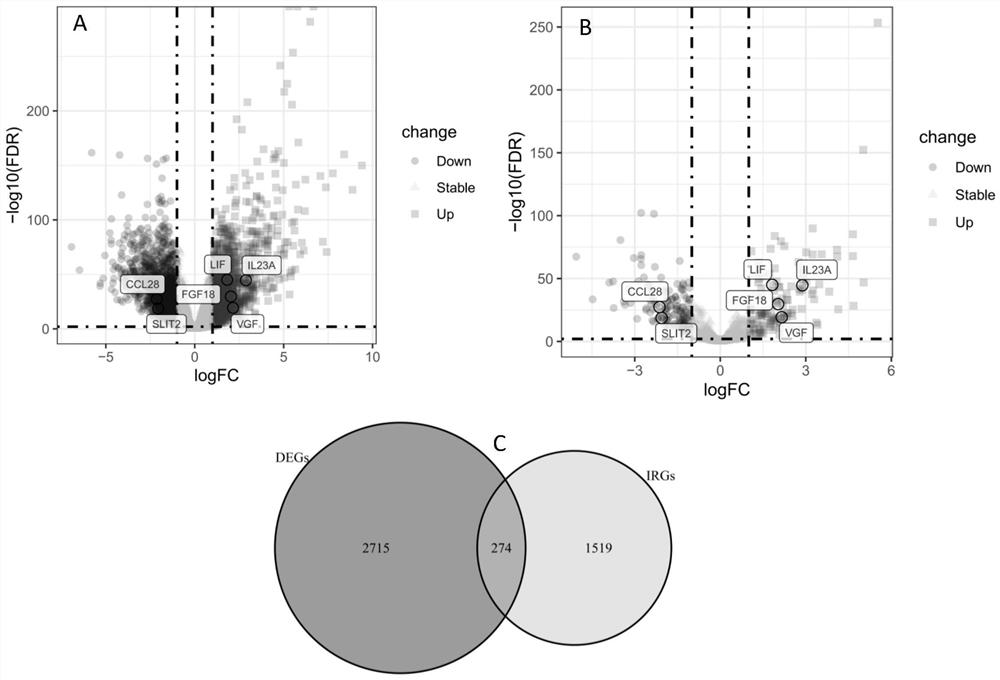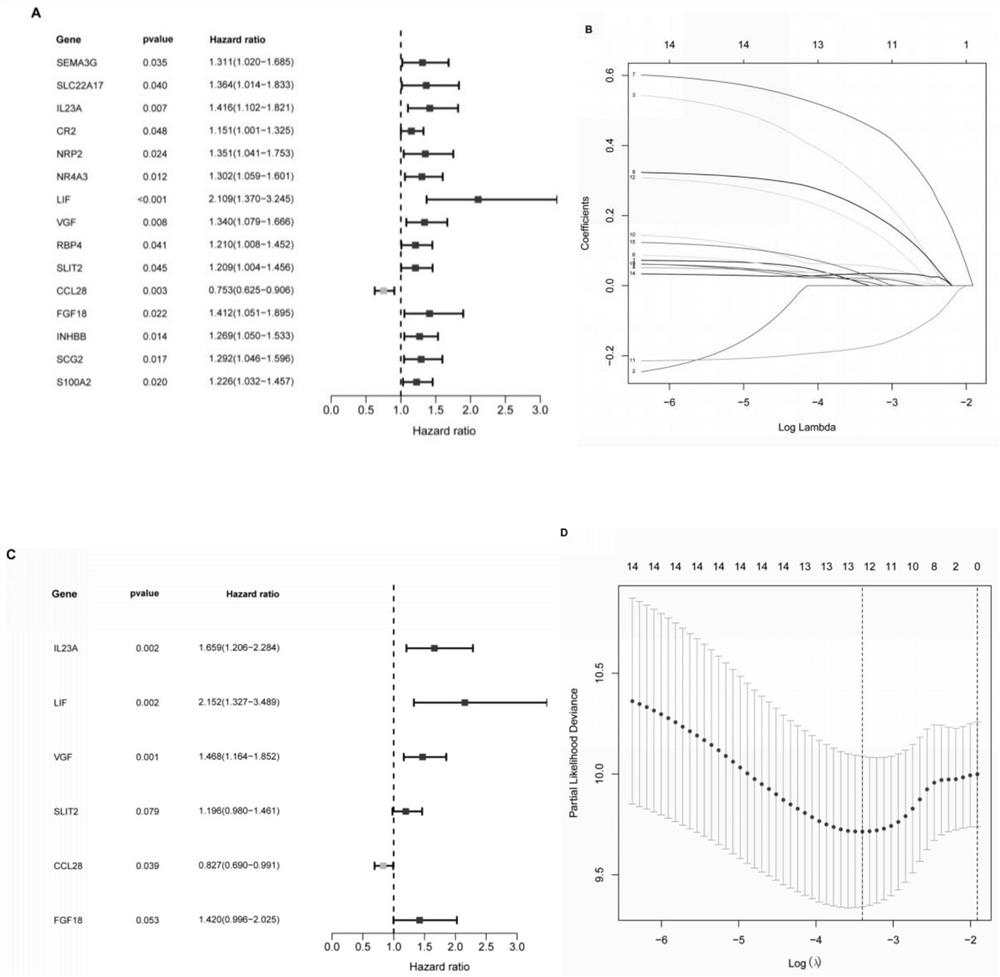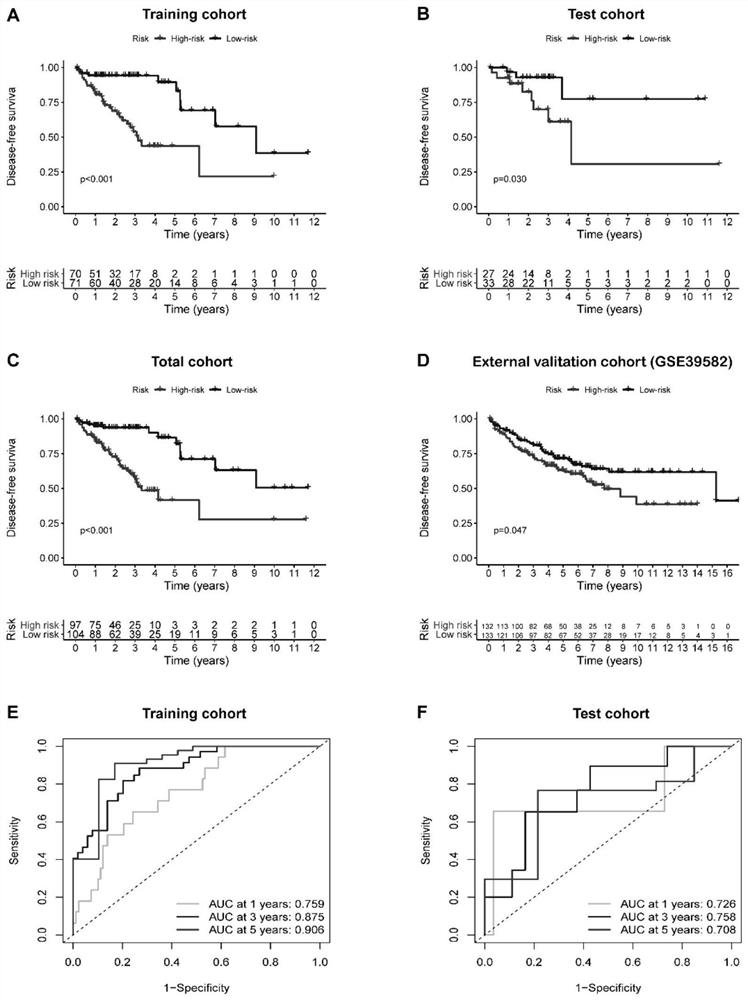Method for efficiently and rapidly evaluating prognosis of II-stage colorectal cancer patient based on immune gene expression characteristic spectrum
A colorectal cancer, gene expression technology, applied in the medical field, can solve problems such as the controversy over the benefits of chemotherapy, and achieve a good prediction effect.
- Summary
- Abstract
- Description
- Claims
- Application Information
AI Technical Summary
Problems solved by technology
Method used
Image
Examples
Embodiment 1
[0032] Embodiment 1: The steps of the method for constructing the IRGCRCⅡ prognosis model are as follows:
[0033] S1: Acquisition of patient information: Obtain the gene expression profile (data level 3) and clinical data of CRC patients from the TCGA database; obtain the transcriptome data and clinical data of stage II CRC that meet the diagnostic criteria in the GSE39582 microarray data set from the GEO database; obtain from the ImmPort Immune-related genes (IRGs) were obtained in the database; patients selected from the GSE39582 data set of the TCGA database and the GEO database were screened for cancers that met the diagnostic criteria for stage II CRC patients determined by the American Joint Committee on Cancer (AJCC) 8th edition. Among the patients included in the analysis, there were 201 cases from the TCGA database and 466 cases from the GSE39582 data set of the GEO database (see Table 1); the above clinical data included age, gender, tumor stage, chemotherapy, surviv...
Embodiment 2
[0050] Example 2: Comparison of the IRGCRCⅡ prognosis model of the present invention with the OncotypeDX colon model
[0051] In order to further evaluate the accuracy of the IRGCRC II prognosis model in predicting the survival rate, this example compared it with the OncotypeDX colon model, the most widely used gene marker in stage II CRC bowel cancer. ROC analysis was performed on the training cohort using both models to evaluate the sensitivity and specificity of survival prediction. The AUCs of the IRGCRCⅡ prognosis model were significantly higher than those of the OncotypeDX colon model at 1 year (0.759vs.0.623), 3 years (0.875vs.0.629) and 5 years (0.906vs.0.698), indicating that the IRGCRCⅡ model has better prognosis accuracy sex( Figure 5 C-E).
Embodiment 3
[0052] Example 3: Relationship between IRGCRCⅡ prognosis model and clinicopathological features
[0053] In order to further evaluate the role of the IRGCRCII model in predicting prognosis, this example incorporates the IRGCRCII risk score and some common clinicopathological features such as age, sex, T stage and chemotherapy into the prognostic correlation analysis. In the training group, univariate Cox regression analysis showed that age, chemotherapy, and risk score were significantly associated with patient survival ( Image 6 A). Multivariate Cox regression analysis showed age (hazard ratio (HR) = 1.034, 95% confidence interval (CI) = 1.000–1.068, p = 0.047) and risk score (HR = 1.184, 95% CI = 1.113–1.260, p Image 6 B). In the overall group, the risk score can be used as an independent prognostic factor for stage II CRC by univariate and multivariate Cox analysis in this embodiment ( Figure 7 A-B).
PUM
 Login to View More
Login to View More Abstract
Description
Claims
Application Information
 Login to View More
Login to View More - R&D
- Intellectual Property
- Life Sciences
- Materials
- Tech Scout
- Unparalleled Data Quality
- Higher Quality Content
- 60% Fewer Hallucinations
Browse by: Latest US Patents, China's latest patents, Technical Efficacy Thesaurus, Application Domain, Technology Topic, Popular Technical Reports.
© 2025 PatSnap. All rights reserved.Legal|Privacy policy|Modern Slavery Act Transparency Statement|Sitemap|About US| Contact US: help@patsnap.com



